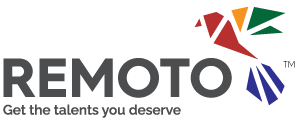Onboarding, also understood as “organizational socialization,” is a term from the field of human resources management that refers to the strategies to insert an employee into a given work environment correctly.
In companies with a remote workforce, onboarding is essential since it strengthens relationships between co-workers and improves their performance. Hence, onboarding is a top strategy in human resources departments and staffing agencies.
At Remote Workforce, we want to share a checklist for socializing your company’s remote employees on their first day of work.
Remote Onboarding
According to Gitlab, remote onboarding is the “official process of integrating new team members into an organization.” Believe it or not without face-to-face interactions between co-workers, a company can develop successful onboarding processes using technology.
The COVID-19 pandemic has had an essential role in human resources strategies within companies with an entirely remote workforce. In reference to this, Rebecca Apostoli gives reasons why onboarding is a powerful tool for carefully navigating remote work and the individual needs of a team.
Remote onboarding is always geared toward meaningful employee engagement. She emphasizes that effective engagement requires well thought out and detailed strategies to make remote workers feel heard and valued.
HR Specialists can employ active listening, identify and clarify contextual uncertainties, and guide remote employees to feel the most welcome.
In the same way, Anna Opochinskaya from Perkbox has her own thoughts on the processes involved in remote onboarding.
Opochinsky highlights the importance of the emotional and mental impact of working from home and how onboarding can help improve the well-being of remote workers.
Employee mental health and well-being must be part of a significant effort in maintaining effective remote onboarding.
And when it comes to boost employee engagement, onboarding experts typically approach this strategy by asking themselves “what will the first day of a remote employee look like?”
In the next section, we provide you with 3 effective key factors to create a checklist to get your employees engaged from day one.
Explain the company culture
Therefore, in the context of an informational interview, you can motivate these employees to assume leadership roles in the company, reproducing corporative values, beliefs, attitudes, and practices in daily work.
Empowerment from day one
Remote onboarding implies empowerment. For achieving empowerment, it’s crucial to deliver resources and materials to the employees onboard. For example, you can provide them with handbooks, user manuals, and notebooks to motivate them in their daily assignments.
Furthermore, you can record a video to motivate distance employees or offer them training opportunities for upskilling or reskilling.
Invite them for a virtual hang
A top tactic for successful onboarding your remote employees is inviting them to virtual hangs. Also, you can invite them to virtual social lunch or dinner to introduce them to people in directive or executive positions, such as de CEO or the Head of Remote.
On this video, Trainual’s new Implementation Experience Manager, Bradford Jones, was supposed to fly to Arizona for onboarding. Due to the coronavirus pandemic, that couldn’t happen. You can see how he joined the team from home!














